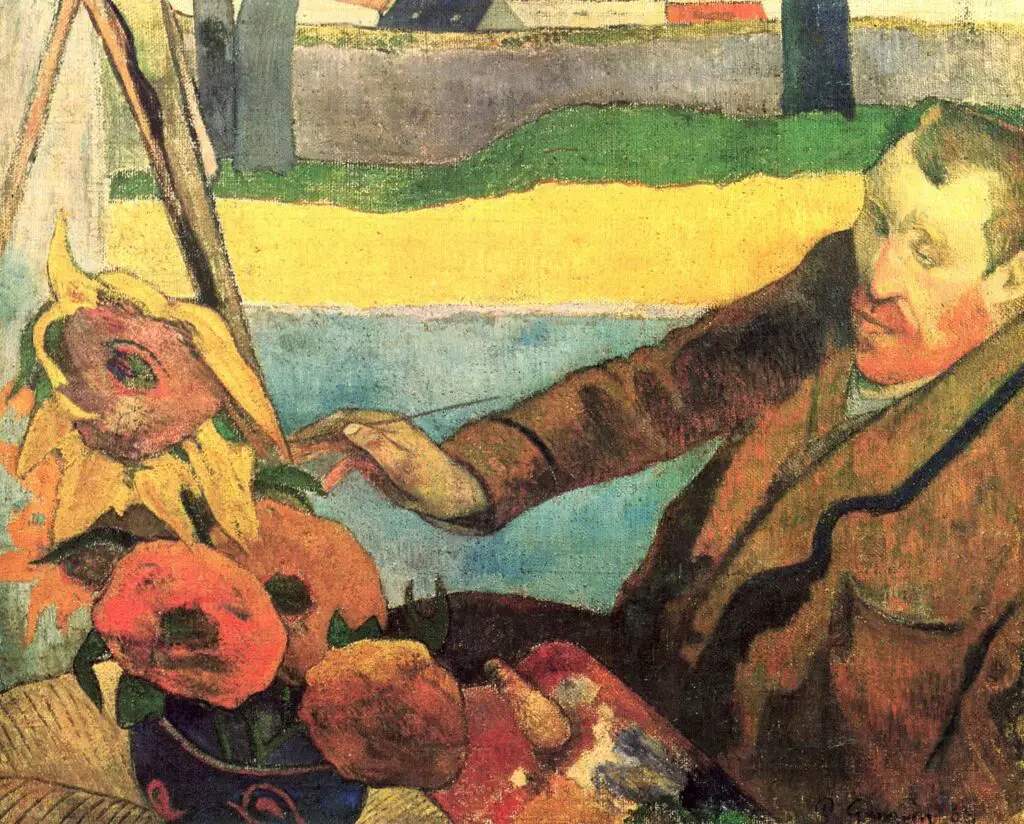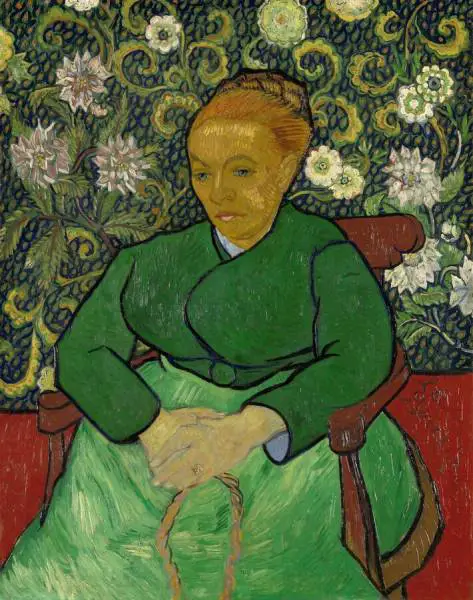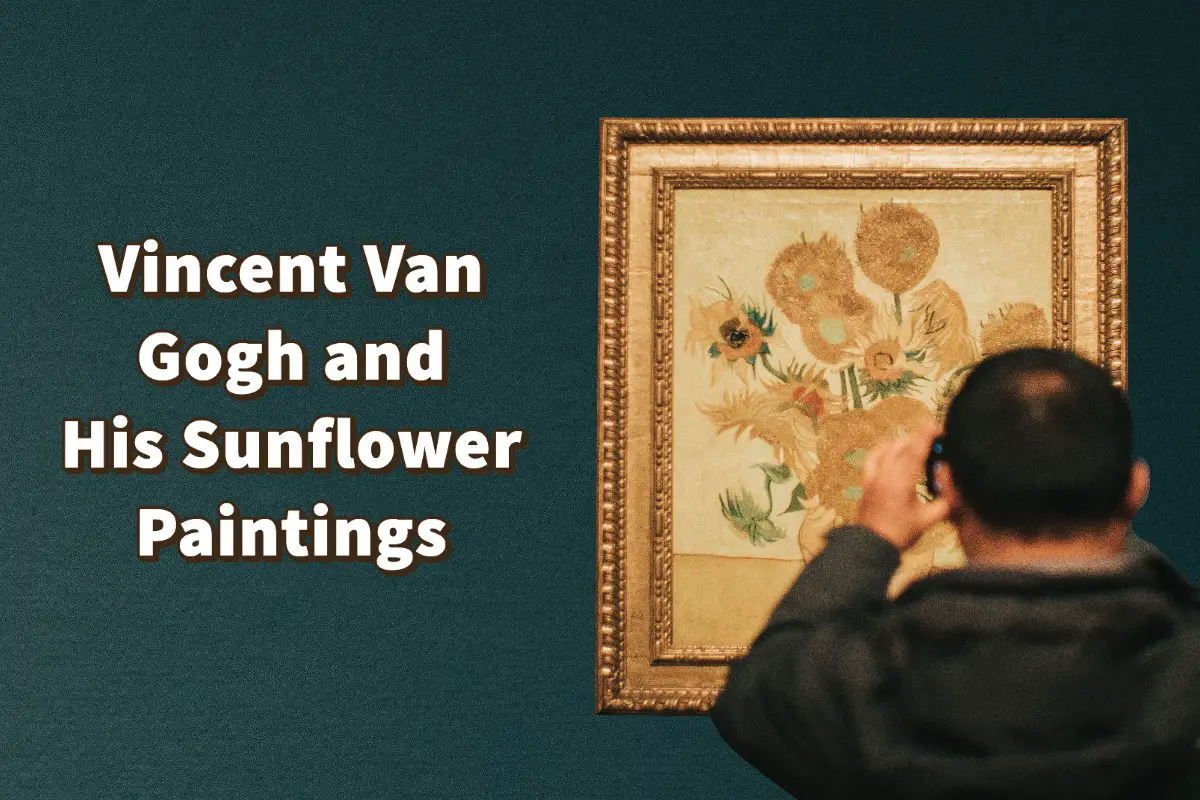The Sunflower paintings that Vincent Van Gogh created are trendy. Many scholars believe that the Sunflower paintings helped Van Gogh’s popularity.
Vincent Van Gogh and his Sunflowers paintings are his most famous paintings. Vincent Van Gogh painted many Sunflower paintings, which are now scattered in museums worldwide. Paul Gaugin loved Vincent Van Gogh’s Sunflower paintings.
Table of Contents
- Vincent Van Gogh Loved Sunflowers
- Several Different Versions Of The Sunflower Paintings
- Van Gogh Painted Flowers To Experiment With Color
- Vincent Van Gogh, Paul Gaugin, and the Sunflowers
- Frequently Asked Questions
- Related Questions
When I was young, my mother had a copy of Vincent Van Gogh’s sunflowers paintings hanging in our kitchen. I can still remember looking at those beautiful sunflowers and how happy they made me feel.
Vincent Van Gogh Loved Sunflowers
If you love Vincent Van Gogh as we do, you must love his Sunflower paintings. When people think of Vincent Van Gogh, they usually think about his sunflower paintings.
When Vincent Van Gogh was painting, many painters would paint pictures of still-life flowers. Vincent Van Gogh painted a lot of different types of flowers, but his paintings show a clear favorite of sunflowers.
Vincent Van Gogh’s extraordinary sunflower paintings and others also knew it. After his death, his sister-in-law Johanna Bonger Van Gogh did not want to sell any Sunflower paintings as she loved them so much but eventually sold some of them.
When Vincent Van Gogh died, his friends brought sunflowers to his funeral to pay tribute him and his love of sunflowers.
Several Different Versions Of The Sunflower Paintings
Vincent Van Gogh is famous all over the world for his sunflower paintings. Many people do not realize that Vincent Van Gogh painted many versions of the Sunflowers paintings. One of the sunflower paintings is still in the hands of a private collector, and another one was lost in a fire during World War 2.
But besides these, many other versions of Van Gogh’s famous Sunflower paintings can be seen worldwide.
Some places you can see Vincent Van Gogh’s Sunflower Paintings:
- Four Cut Sunflowers By Vincent Van Gogh (1887) are at the Kroller-Muller Museum in Ontario, Holland
- Two Cut Sunflowers by Vincent Van Gogh (1887) Van Gogh Museum, Amsterdam, Holland
- Two Cut Sunflowers (Version 2) by Vincent Van Gogh (1887) Kunstmusseum, Bern Switzerland.
- Two Cut Sunflowers (Version 3) by Vincent Van Gogh *1887( Metropolitan Museum of Art, New York USA
- One Vase of Sunflowers with Fifteen Flowers, by Vincent Van Gogh, is at the Japan Museum of Art, Tokyo, Japan
- Vase with Fifteen Sunflowers, by Vincent Van Gogh, National Gallery of London, London, England.
- Vase with Fifteen Sunflowers by Vincent Van Gogh, Van Gogh Museum, Amsterdam, Holland.
- One Vase with Twelve Sunflowers by Vincent Van Gogh is at the Sompo Japan Museum of Art in Tokyo, Japan
- Vase with Fifteen Sunflower, by Vincent Van Gogh, is at London’s National Gallery, London, England.
- Vase with Twelve Flowers, by Vincent Van Gogh, is at the Philadelphia Museum of Art, Philadelphia, USA
- One Vase with Twelve Sunflowers by Vincent Van Gogh is at the Neue Pinakothek in Munich, Germany
A Vase with Three Sunflowers is part of a private collection in the United States.
One of Van Gogh’s Sunflowers, Vase with Five Sunflowers, was part of the private collection of Koyata Yamamoto. In 1945, during the American air attack on Japan during World War II, the building where the painting was located was burned, and the painting was destroyed.
Yamamoto tried to remove the painting from the building, but it had a massive frame on it and could not be taken off the wall in time. Sadly, we lost such an iconic Van Gogh painting in such a tragic way.
Van Gogh Painted Flowers To Experiment With Color
Van Gogh started to paint flowers to experiment with color. Vincent Van Gogh studied and learned a lot about color; this helped him to become a better artist.
Painting the Sunflowers helped him to be able to study color better. It was relatively cheap for him to get a vase of flowers and paint instead of paying for a model.
As we have mentioned many times, Vincent Van Gogh was not a successful painter during his lifetime. He only sold one painting, so he never had a lot of money from or when he was painting.
We can see an evolution in his painting of the flowers. His first flower paintings had traditional colors that many artists used. Still, after a while, Van Gogh started experimenting with color and used many contrasting colors in his paintings.
Vincent Van Gogh, Paul Gaugin, and the Sunflowers

The portrait was painted when Gauguin visited Van Gogh in Arles, France.
He was impressed when the painter Paul Gauguin saw Vincent van Gogh’s sunflower paintings in Paris. Vincent van Gogh looked up to Paul Gaugin, and he felt honored to hear that Gaugin liked his sunflowers.
Because Gaugin liked his sunflowers so much, this also helped to validate to Vincent that he was on the right track in painting the sunflower paintings.
When Van Gogh heard that Paul Gaugin would come to the South of France and stay with him in their rented house so they could paint together, he was delighted. Van Gogh then painted Sunflower paintings to decorate Gaugin’s room in their shared home.
Paul Gaugin said the Sunflower paintings were “completely Vincent.” In fact, in 1888, Paul Gaugin painted Vincent Van Gogh painting the sunflowers.
When Paul Gaugin left the house that he shared with Vincent, he asked if he could have a sunflower painting in exchange for some artwork he left behind. Gaugin wanted one of these paintings as he loved Van Gogh’s sunflowers.
Sunflowers – Uses Only Three Colors
One of the remarkable things about some of the Sunflowers paintings – see Sunflowers (1889) by Vincent Van Gogh in Van Gogh Museum Amsterdam, Holland below – is this Sunflower painting only uses three tints and yellow and nothing else. Because of this, Van Gogh achieved a wonderful harmony in his painting.
The simple motif and harmony also appeal to many people when they see the sunflower painting. It is why these sunflower paintings continue to be such an essential part of the Van Gogh collection and his art.
Sunflowers Symbolize Gratitude
Vincent Van Gogh saw the Sunflowers as symbolizing gratitude. He wanted to put the sunflowers in a series of 3 paintings that all symbolize gratitude.
In his notebook, Van Gogh planned to have two different sunflowers painted together with a woman rocking a cradle in the center. The Portrait of Madame Roulin was to symbolize the gratitude of mothers. The sunflowers on the end of the triptych would also symbolize gratitude.
The three paintings that Van Gogh planned to use in his triptych were:



The triptych Van Gogh wanted to make never happened, as all three paintings are now in different museums worldwide. Van Gogh felt the color in the sunflowers would coordinate and work well with the Portrait of Madame Roulin.
Anita Louise Art is dedicated to art education, great artists, and inspiring others to find and create their art. We love art that uplifts and inspires. #ArtToMakeYouSmile! #ArtToMakeYouHappy!
If you are interested in seeing any of my art, you can find out more by clicking here. If you are interested in what inspires me and my paintings, you can discover more by clicking here.
We have a free newsletter and would love you to be part of our community; you can subscribe to the newsletter by clicking here. I would be happy to talk to you if you have any questions. You can reach me, Anita, by clicking here.
Subscribe to our Anita Louise Art YouTube Channel filled with great videos and information by clicking here.
Join us for our podcast “5 Minutes With Art.” Spend 5 minutes a week with us to discover and learn about great art and artists. You can find out more about our podcast by clicking here.
Frequently Asked Questions
Why did Vincent Van Gogh paint so many Sunflower paintings?
Van Gogh was captivated by the vibrant and expressive nature of sunflowers. He considered them symbolic of happiness and gratitude. The series of Sunflower paintings allowed him to explore different color combinations and experiment with his unique style.
How many Sunflower paintings did Vincent Van Gogh create?
Van Gogh painted several versions of Sunflowers, with varying compositions and color schemes. There are five known versions, with some differences in the number of flowers and background.
What inspired Vincent Van Gogh to paint Sunflowers?
Van Gogh’s inspiration for Sunflowers is believed to be a combination of his admiration for the beauty of the flowers and his desire to create art that conveyed positive emotions. He saw sunflowers as a symbol of joy and the vitality of life.
Did Vincent Van Gogh paint the Sunflowers from life or imagination?
Van Gogh initially painted Sunflowers from life, placing the flowers in vases in his studio. However, as he continued the series, some paintings were created from memory and imagination, showcasing his evolving artistic interpretation.
How did Sunflower paintings contribute to Van Gogh’s popularity?
The Sunflower paintings are considered iconic examples of Van Gogh’s distinctive style and use of color. These works have become synonymous with his name, significantly contributing to his posthumous fame as a master of Post-Impressionist art.
Where can one find Vincent Van Gogh’s Sunflower paintings today?
Vincent Van Gogh’s Sunflower paintings are housed in various museums around the world. Notable collections include the Van Gogh Museum in Amsterdam, the National Gallery in London, and the Neue Pinakothek in Munich.
Did Paul Gauguin have a special connection to Van Gogh’s Sunflower paintings?
Yes, Paul Gauguin, a fellow artist and friend of Van Gogh, admired the Sunflower paintings. Gauguin even received one of the Sunflower paintings as a gift from Van Gogh. Their friendship and artistic exchange influenced each other’s work.
What is the significance of the Sunflower paintings in Van Gogh’s artistic evolution?
The Sunflower series marks a crucial phase in Van Gogh’s artistic development. The paintings showcase his mastery of color and texture, as well as his pursuit of emotional expression through art. They reflect his experimentation with brighter, more vibrant palettes.
Are there any hidden meanings in Van Gogh’s Sunflower paintings?
While the primary theme is often associated with joy and positivity, some art historians suggest that Van Gogh’s Sunflowers may also reflect deeper emotions and struggles. The varying states of the flowers, from vibrant to wilting, may symbolize the transient nature of beauty and life.
How do Vincent Van Gogh’s Sunflower paintings impact the art world today?
Van Gogh’s Sunflower paintings continue to inspire artists and art enthusiasts worldwide. They remain iconic examples of the power of color and emotion in art, and their popularity endures as a testament to Van Gogh’s enduring influence on the art world.
Related Questions
Why Did Vincent van Gogh Use The Color Yellow So Much In His Work?
There have been many theories about why Vincent Van Gogh used the yellow color so much in his artwork. Some thought it was due to his medical conditions or medication not seeing the yellow color. Before he was hospitalized, Vincent Van Gogh also used many yellow colors. So, using the yellow color is likely a stylistic and artistic decision – Vincent Van Gogh loves the yellow color in his artwork. Yellow is an excellent color with blue, white, and other contrasting colors.
By clicking here, you can learn more by reading Why Did Vincent van Gogh Use The Color Yellow So Much In His Work?
How Did Vincent Van Gogh’s Paintings Become Famous?
Vincent van Gogh’s painting became famous because his sister-in-law took it upon herself after his death and the death of her husband, Theo, to find a way to get his paintings and name out to the world. She was brilliant and savvy in how she did this. By the time she had died in 1925, Vicent van Gogh was world-renowned.
By clicking here, you can learn more by reading How Did Vincent Van Gogh’s Paintings Become Famous?.


